SAPPHIRE Radeon HD 6970 Review Index
- 1 – Meet with SAPPHIRE’s Radeon HD 6970
- 2 – SAPPHIRE Radeon HD 6970 Features
- 3 – SAPPHIRE Radeon HD 6970 OpenGL performances
- 4 – SAPPHIRE Radeon HD 6970 Direct3D performances
- 5 – SAPPHIRE Radeon HD 6970 Gaming performances
- 6 – SAPPHIRE Radeon HD 6970 DirectCompute performances
- 7 – SAPPHIRE Radeon HD 6970 Power consumption and overclocking
- 8 – SAPPHIRE Radeon HD 6970: Conclusion and Misc Links
3 – SAPPHIRE Radeon HD 6970 OpenGL performances
Testbed:
– CPU: Core i7 960 @ 3.2GHz
– RAM: 4GB DDR3 Corsair Dominator
– Motherboard: GIGABYTE X58-A UD5
– Windows 7 64-bit
– Graphics drivers: R263.09
– PSU: Corsair AX1200
3.1 FurMark (OpenGL 2)
FurMark 1.8.2 has been used for the test. FurMark homepage is HERE.
Settings: 1920×1080 fullscreen, no AA, no postFX, 60sec, Xtreme mode UNCHECKED.
Rule: The higher the number of points, the faster the card is.
| 8362 points (140 FPS) – EVGA GeForce GTX 580 SC, ***OCP disabled***, GPU core: 880MHz |
| 8259 points (138 FPS) – ASUS ENGTX580 ***OCP disabled***, GPU Core: 871MHz, VDDC: 1.088V |
| 7769 points (130 FPS) – EVGA GeForce GTX 580 SC, ***OCP disabled***, GPU core: 797MHz |
| 6470 points – EVGA GeForce GTX 480 |
| 6341 points (FPS: 106) – SAPPHIRE Radeon HD 6970, GPU core: 880MHz, PowerTune: +20% |
| 5420 points – ATI Radeon HD 5870 |
| 5161 points – MSI GeForce GTX 470 |
| 4641 points (FPS: 78) – SAPPHIRE Radeon HD 6870, GPU core: 1000MHz |
| 4583 points (FPS: 76) – SAPPHIRE Radeon HD 6870, GPU core: 980MHz |
| 4484 points (FPS: 74) – ASUS EAH6870 |
| 4310 points (FPS: 72) – SAPPHIRE Radeon HD 6870 |
| 4243 points (FPS: 71) – EVGA GeForce GTX 580 SC, OCP enabled |
| 3912 points (FPS: 65) – SAPPHIRE Radeon HD 6970, GPU core: 880MHz, PowerTune: 0 |
| 3884 points – MSI N460GTX Cyclone 768D5 OC |
| 3824 points (FPS: 64) – SAPPHIRE Radeon HD 6970, GPU core: 880MHz, PowerTune: -20% |
| 2772 points – MSI R5770 Hawk |
Remark: Radeon HD 6970 real score is the one with PowerTune set to +20%.
3.2 TessMark (OpenGL 4)
Hardware tessellation is one of the big features of Direct3D 11 and OpenGL 4 capable graphics cards. TessMark is a new benchmark focused only on the tessellation engine of DX11 class cards. It’s a pure tessellation benchmark, it does not contain complex shader or other heavy texture fetches. TessMark shows an overview of the tessellation engine raw power, that’s all. DX11 specifies that the tessellation factor can vary from 1.0 up tp 64.0. Of course, for tessellation factors like 32 or 64, most of the tessellated triangles are smaller than… a pixel. In those cases, tessellation is useless and in a real world application such as a game, high tessellation factors won’t be used. But in the case of a synthetic benchmark, it’s always instructive to see how cards can handle the whole range of tessellation level.
TessMark 0.2.2 has been used for the test.
Settings: 1920×1080 fullscreen, no AA, 60sec, map set 1.
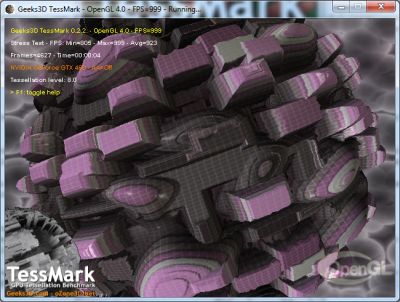
Rule: The higher the number of points, the faster the card is.
Tessellation factor 8.0: moderate
| 53151 (888FPS) – EVGA GTX 580 SC |
| 52188 (872FPS) – ASUS ENGTX580 |
| 48084 – EVGA GeForce GTX 480 |
| 44090 (735FPS) – Sapphire HD 6970, GPU core: 880MHz – Cat11.6 |
| 38191 – MSI GeForce GTX 470 |
| 30512 – MSI N460GTX Cyclone 768D5 OC |
| 27718 (462FPS) – Sapphire HD 6870, GPU core: 1000MHz |
| 27469 (458FPS) – Sapphire HD 6970, GPU core: 880MHz – Cat10.12 |
| 26223 – ASUS EAH6870 |
| 24161 (403FPS) – ATI Radeon HD 5870 |
| 23131 (386FPS) – Sapphire HD 6870 |
| 20745 – MSI R5770 Hawk |
Remark: Cayman GPU implements AMD’s 8th generation tessellator (Barts is the 7th and Cypress is the 6th) and for low tessellation level, Cayman (HD 6970) should process tessellation twice faster than Cypress GPU (HD 5870). This is clearly not the case and this is certainly due to the OpenGL driver that has not been updated to reflect Cayman new architecture.
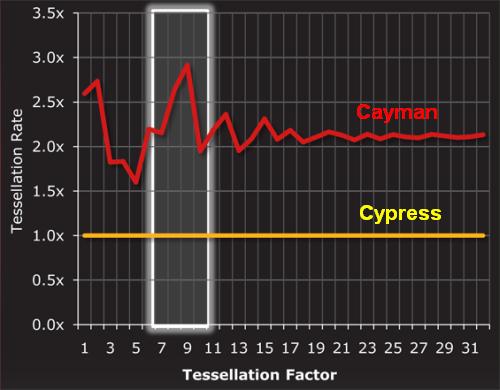
Tessellation factor 16.0: normal
| 33266 (555FPS) – EVGA GTX 580 SC |
| 32666 (545FPS) – ASUS ENGTX580 |
| 29196 – EVGA GeForce GTX 480 |
| 23316 – MSI GeForce GTX 470 |
| 19398 (323FPS) – Sapphire HD 6970, GPU core: 880MHz – Cat11.6 |
| 17452 – MSI N460GTX Cyclone 768D5 OC |
| 9255 (154FPS) – Sapphire HD 6870, GPU core: 1000MHz |
| 8555 – ASUS EAH6870 |
| 8229 (137FPS) – Sapphire HD 6970, GPU core: 880MHz – Cat10.12 |
| 8177 (136FPS) – Sapphire HD 6870 |
| 8018 (134FPS) – ATI Radeon HD 5870 |
| 7669 – MSI R5770 Hawk |
Tessellation factor 32.0: extreme
| 15427 (257FPS) – EVGA GTX 580 SC |
| 15128 (252FPS) – ASUS ENGTX580 |
| 13008 – EVGA GeForce GTX 480 |
| 9997 – MSI GeForce GTX 470 |
| 6729 – MSI N460GTX Cyclone 768D5 OC |
| 3397 (57FPS) – Sapphire HD 6970, GPU core: 880MHz – Cat11.6 |
| 2299 – ASUS EAH6870 |
| 2246 (38FPS) – Sapphire HD 6870 |
| 2156 (36FPS) – ATI Radeon HD 5870 |
| 2122 (35FPS) – Sapphire HD 6970, GPU core: 880MHz – Cat10.12 |
| 2159 – MSI R5770 Hawk |
Tessellation factor 64.0: insane
| 4940 (82FPS) – EVGA GTX 580 SC |
| 4840 (81FPS) – ASUS ENGTX580 |
| 3963 – EVGA GeForce GTX 480 |
| 3169 – MSI GeForce GTX 470 |
| 1959 – MSI N460GTX Cyclone 768D5 OC |
| 594 (10FPS) – Sapphire HD 6970, GPU core: 880MHz – Cat11.6 |
| 585 – ASUS EAH6870 |
| 574 (10FPS) – Sapphire HD 6870 |
| 565 – MSI R5770 Hawk |
| 550 (10FPS) – ATI Radeon HD 5870 |
| 539 (9FPS) – Sapphire HD 6970, GPU core: 880MHz – Cat10.12 |
3.3 ShaderToyMark (OpenGL 2)
ShaderToyMark 0.1.0 is an OpenGL 2 benchmark, developed with GeeXLab,
and focused on pixel shaders only. The pixel shaders are heavily based on math (few texture fetches) and then ShaderToyMark can be seen as a kind of GPU computing benchmark.
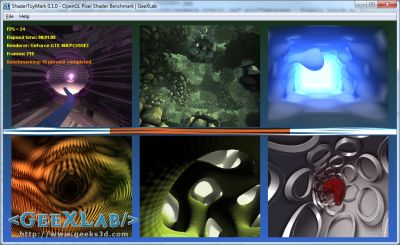
Settings: 960×540 windowed, no AA, 60sec
| 316 points (52 FPS) – EVGA GTX 580 SC |
| 306 points (51 FPS) – ASUS ENGTX580 |
| 263 points (43 FPS) – GeForce GTX 480 |
| 234 (39FPS) – Sapphire HD 6970 |
| 189 points (31 FPS) – ATI Radeon HD 5870 |
| 184 points (30 FPS) – ASUS EAH6870 |
| 179 (29FPS) – Sapphire HD 6870 |
| 156 points (26 FPS) – MSI N460GTX Cyclone |
| 104 points (17 FPS) – MSI R5770 Hawk |
| 46 points (7 FPS) – GeForce 9800 GTX |
| 36 points (6 FPS) – EVGA GTX 280 |
| 33 points (5 FPS) – GeForce GTX 260 |
Remark: ShaderToyMark is nice because it simply shows the raw processing power. The peak shader arithmetic of the HD 6970 is 2703 GFLOPS and the one of the HD 6870 is 2016 GFLOPS.
The ratio between GLOPS is 2703 / 2016 = 1.3 while the ratio between scores is: 234 points / 179 points = 1.3.
3.4 Maxon CINEBENCH R11.5 (OpenGL 2)
CINEBENCH is an OpenGL benchmark based on Cinema4D.
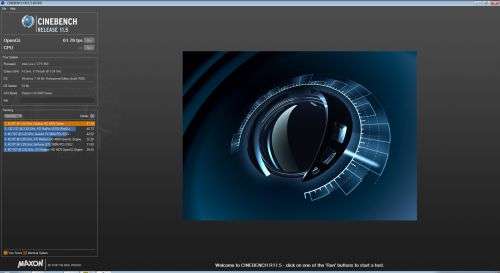
Settings: windowed mode 1920×1080.
| 61.79 FPS – Sapphire Radeon HD 6870 |
| 61.60 FPS – Sapphire Radeon HD 6970 |
| 61.22 FPS – Radeon HD 5870 |
| 42.84 FPS – GeForce GTX 480 |
| 42.71 FPS – EVGA GTX 580 SC |
| 42.53 FPS – MSI N460GTX Cyclone |
3.5 OpenGL 4 Mountains demo
Mountains demo is an OpenGL 4 demo that shows hierarchical-Z map based occlusion culling in action.
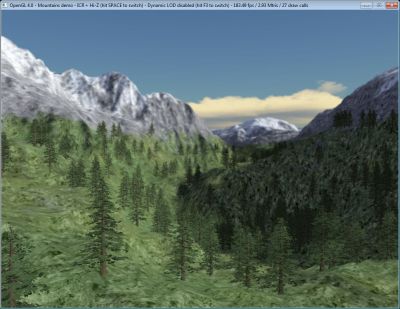
Settings: default window size: 1024×768, ICR enabled (Instance Cloud Reduction), Hi-Z enabled and dynamic LOD enabled.
| 684 FPS – EVGA GTX 580 SC |
| 674 FPS – ASUS ENGTX580 |
| 568 FPS – EVGA GTX 480 |
| 390 FPS – Sapphire Radeon HD 6970 |
| 350 FPS – MSI N460GTX Cyclone 768D5 |
| 255 FPS – ASUS EAH6870 |
| 235 FPS – Sapphire Radeon HD 6870 |
| 231 FPS – Radeon HD 5870 |
| 220 FPS – MSI R5770 Hawk |
3.6 GluxMark2 (OpenGL 2)
GluxMark2 is a purely syntethic OpenGL benchmark
and tries to measure performance from every point of view by using programmable graphics pipeline (vertex, geometry and fragment/pixel shaders).
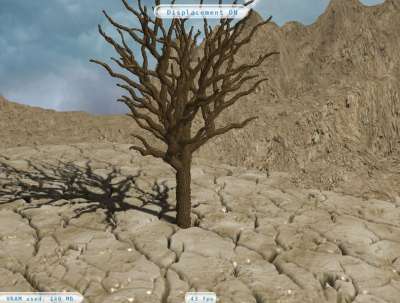
Preset: high-end (1920×1080, MSAA: 8X)
| 11002 points (OpenCL: +4318 = 15320 points) – EVGA GTX 580 SC |
| 9216 points (OpenCL: +2776 = 11992 points) – GeForce GTX 480 |
| 8099 points – Radeon HD 5870 |
| 8010 points (OpenCL: +709 = 8719 points) – Sapphire Radeon HD 6970 |
| 6615 points – Sapphire Radeon HD 6870 |
| 5367 points (OpenCL: +2789 = 8156 points) – MSI N460GTX Cyclone |
3.7 Unigine Heaven (OpenGL 4)
For this last OpenGL test, I used Ungine Heaven 2.1, one of the standard Direct3D / OpenGL synthetic benchmark.
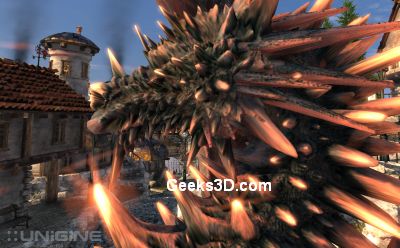
Settings: 1920×1080 fullscreen, OpenGL rendering, tessellation: normal, shaders: high, AA: 4X, 16X anisotropic filtering.
| 48.6 FPS, Scores: 1224 – EVGA GTX 580 SC |
| 46.4 FPS, Scores: 1168 – ASUS ENGTX580 |
| 38.7 FPS, Scores: 974 – EVGA GeForce GTX 480 |
| 28 FPS, Scores: 704 – SAPPHIRE Radeon HD 6970 |
| 24.5 FPS, Scores: 617 – MSI N460GTX Cyclone 768D5 OC |
| 15.9 FPS, Scores: 400 – ATI Radeon HD 5870 |
| 13.6 FPS, Scores: 342 – ASUS EAH6870 |
| 13.5 FPS, Scores: 339 – SAPPHIRE HD6870 |
| 9 FPS, Scores: 227 – MSI R5770 Hawk |
SAPPHIRE Radeon HD 6970 Review Index
- 1 – Meet with SAPPHIRE’s Radeon HD 6970
- 2 – SAPPHIRE Radeon HD 6970 Features
- 3 – SAPPHIRE Radeon HD 6970 OpenGL performances
- 4 – SAPPHIRE Radeon HD 6970 Direct3D performances
- 5 – SAPPHIRE Radeon HD 6970 Gaming performances
- 6 – SAPPHIRE Radeon HD 6970 DirectCompute performances
- 7 – SAPPHIRE Radeon HD 6970 Power consumption and overclocking
- 8 – SAPPHIRE Radeon HD 6970: Conclusion and Misc Links
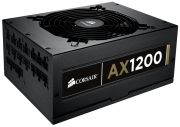
According to PCGH Cat10.12a hotfix boosts D3D tessellation, OpenGL tessellation tweaking is scheduled for Q1/2011
http://www.pcgameshardware.de/aid,804732/Neuer-HD-6900-Treiber-steigert-Tessellationsleistung-um-bis-zu-75-Prozent/Grafikkarte/News/
Great news for the upcoming OpenGL tessellation optimizations. Thanks Stefan!
Pingback: [Tested] Radeon HD 6970 PowerTune Technology - 3D Tech News, Pixel Hacking, Data Visualization and 3D Programming - Geeks3D.com
I noticed that Cayman has one more OpenCL extension than Barts or Cedar – cl_amd_fp64 i assume?
I don’t know. I’ll tell you when I re-plug the HD 6970 on my testbed.
Pingback: [Tested] AMD Catalyst 11.1a: OpenGL Tessellation Support is Slightly… Broken - 3D Tech News, Pixel Hacking, Data Visualization and 3D Programming - Geeks3D.com
Pingback: The True Reason Behind AMD HD 6970/6950 Delay: Each Card is Hand-crafted! - 3D Tech News, Pixel Hacking, Data Visualization and 3D Programming - Geeks3D.com
Pingback: [Tested] Catalyst 11.1a Hotfix (Jan26): Gains up to 18% in OpenGL Tessellation (TessMark) - 3D Tech News, Pixel Hacking, Data Visualization and 3D Programming - Geeks3D.com
Will my PSU be able to power this card?
I have a S-ATA Netzteil ATX Power supply MS N55-VAL
I it good enough to power this card?